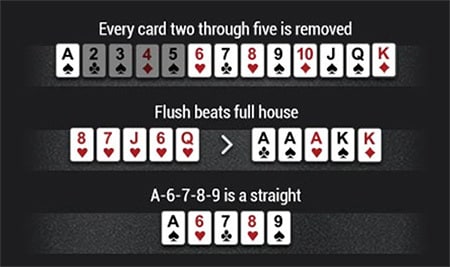-
Promotions
- Loyalty
- Welcome Bonus
- Fish Buffet
- Honeymoon for Newcomers
- Daily Promos
- $10M May Cash Giveaway
- Daily Freebie
- Mystery Envelope
- Daily Leaderboards
- Hold’em Daily Leaderboard
- PLO/PLO-5 Daily Leaderboard
- Rush & Cash Daily Leaderboard
- All-in or Fold Daily Leaderboard
- Spin & Gold Daily Leaderboard
- Short Deck Daily Leaderboard
- Flip&Go Daily Leaderboard
- Mystery Battle Royale Daily Leaderboard
- Signature
- GGCare & GGCheers
- Rush & Cash Friday
- Bubble Protection
- Spin & Gold Challenge
- Jackpots
- Bounty Jackpot
- Bad Beat Jackpot Rebirth
- All-In Fortune
- All-In or Fold Jackpot
- GGTeam
- Tournaments
-
WSOP
- WSOP
- WSOP Champions
- WSOP Bracelets
- WSOP Online
- WSOP Online 2023
- WSOP Online 2022
- WSOP Online 2021
- Road to WSOP
- Road to Vegas
- Road to WSOP Europe
- WSOP Online Circuit
- WSOP Summer Circuit 2023
- WSOP Spring Circuit 2023
- WSOP Winter Circuit 2022
- Blog
-
How to Play
- Get Started
- Poker School
- House Rules
- Cash Game
- Texas Hold’em
- Omaha
- 6+ Short Deck
- Unique Features
- Spin & Gold ELO
- Splash
- EV Cashout
- NFT Avatars
- Final Table Betting
- Social Features
- Staking Platform
- Smart HUD
- Smart Betting
- PokerCraft
- Final Table Features
- Card Squeeze
- Prop Bet
- Exclusive Games
- AoF Sit & Go
- All-In or Fold
- Mystery Battle Royale
- Spin & Gold
- Rush & Cash
- Flip & Go Renewal
- Funds
- Deposit & Withdrawal
- Real Money Poker
- Partners
- About Us
- Help
- Legal
- Safety & Security
The Beginners Guide Series: Introduction to Short Deck
- Posted on
- Posted Under Beginner Strategy

Poker’s many variants are the reason for the game’s incredibly broad appeal. Even if you don’t like one form of poker like Texas Hold’em, there are countless other to try. The additional variety also means veterans feeling burnt out can simply try poker in a different form to rekindle their passion.
If you haven’t left your Texas Hold’em comfort zone, we encourage you to try different poker variants. Some well-known options include Omaha, Seven-Card Stud, or Five-Card Draw. You may have also heard of Short Deck, a variant that’s been rapidly growing in popularity, particularly in Asia. If you have been thinking of trying it out at GGPoker, here’s a guide on how to play.
Game Overview
Short Deck is a poker variant that is similar to Texas Hold’em but for two key differences. Introduced by businessmen and poker players Paul Phua and Richard Yong, the game has rapidly grown in popularity from its initial use in the Triton Poker Series.
It uses a trimmed-down version of the standard 52-card deck, using just 36 cards. All twos, threes, fours, and fives are removed from the deck, which is why it’s also known as six-up poker. The trimmed deck also causes a change in the hand rankings.
The second major difference is in the forced betting structure. While Hold’em uses blinds, Short Deck uses antes, but more on that later on.
Other than those two differences, Short Deck plays the same as Hold’em. It’s a community card poker game where players compete to create the best hand using a mix of their hole cards and community cards.

Card Mechanics and Rounds
In both Hold’em and Short Deck, players are dealt two “hole cards”, cards only they can see. These hole cards can be used in any combination with the five face-up “community cards” to create the best possible five-card hand.
Just like Hold’em, Short Deck doesn’t reveal all the cards at once; it takes place over four betting rounds. The first, known as the pre-flop, occurs after every player receives their hole cards. The second round is known as the post-flop action, happens after the first three community cards are revealed. The following rounds are called the turn and river, and each bring a single community card. After the river, the final round, the showdown, begins. Nobody bets; instead, all players still in the hand reveal their cards, and the player with the strongest hand wins.
Short Deck follows the traditional single-card rankings in poker. In order of weakest to strongest, the cards are 6-7-8-9-10-J-Q-K-A. Five-card hands have different combinations with their own rankings, and this is where Short Deck begins to deviate from Holdem.
Here are Short Deck’s hand rankings in increasing order of strength:
High Card – This hand creates no other hands. It is ranked from the highest card down to the lowest.
Pair – This hand has a single pair of two cards with the same rank (eg. 6-6-8-9-10).
Two Pair – This hand has two pairs of two cards with the same rank (eg. 6-6-7-7-K).
Three-of-a-kind – This hand has three cards of the same rank (eg. 9-9-9-K-Q).
Straight – This hand consists of five cards in consecutive order. Aces can be used as a low card and is ranked lower than a 6 when used in this way (eg. A-6-7-8-9* or T-J-Q-K-A).
Full house – This hand has both a pair and a three-of-a-kind (eg. J-J-K-K-K).
Flush – This hand has five cards of the same suit. With the elimination of all 2’s through 5’s the odds of making certain hands changes which is why a Flush is ranked above a Full House for this game.
Four-of-a-kind – This hand has four cards of the same rank (eg. A-A-A-A-8).
Straight flush – This hand has five cards of the same suit and in consecutive order (eg. 7-8-9-10-J all clubs)
Royal flush – This is a Straight Flush with an Ace as the high card A-K-Q-J-T.

Betting Actions
Short Deck uses the same betting actions as most other poker types. Without an active bet, players can choose to check or make a bet. Checking just means passing the action to the next player. If everyone checks, the betting round ends.
Once someone bets, players have three options for how they can respond. They can fold, leaving the hand and tossing their hands back to the muck. They can call, matching the exact amount of the bet. Or they can raise, increasing the size of the bet and forcing other players to respond to the new size.
Once the last bet is called, the action is considered “closed” and the round ends.
Forced Bet System
Instead of Hold’em’s blinds, Short Deck uses antes, which are forced bets everyone must pay. At the start of the pre-flop round, everyone pays an ante. The seat that acts last post-flop, known as the “button”, pays two antes instead. Now, the active bet is the size of the two antes, and all players must call or raise it to remain in the pot.

Strategic Differences vs. Holdem
We’ve explained the basic rules of Short Deck for players totally new to poker, but if you have experience in Texas Hold’em and want to start learning the finer points of Short Deck strategy, here are a few things to consider.
Hands are much closer to each other in relative strength. Hold’em can have hands that have significantly higher win rates pre-flop like AA; however, these hands lose a lot of relative value in Short Deck since the bottom four cards are cut. In Hold’em, while one pair is often enough to take down the pot, Short Deck places an emphasis on good post-flop play since it’s easier to make stronger hands like three-of-a-kinds and straights.
In Short Deck, limping is very common. Antes make the pots bigger even without raising, making odds for calling better. Limping helps disguise your hand, and ensures you don’t get put in a bad spot if you are re-raised. Post-flop play is far more important in Short Deck, so it’s natural players will gravitate to limping in pre-flop.


